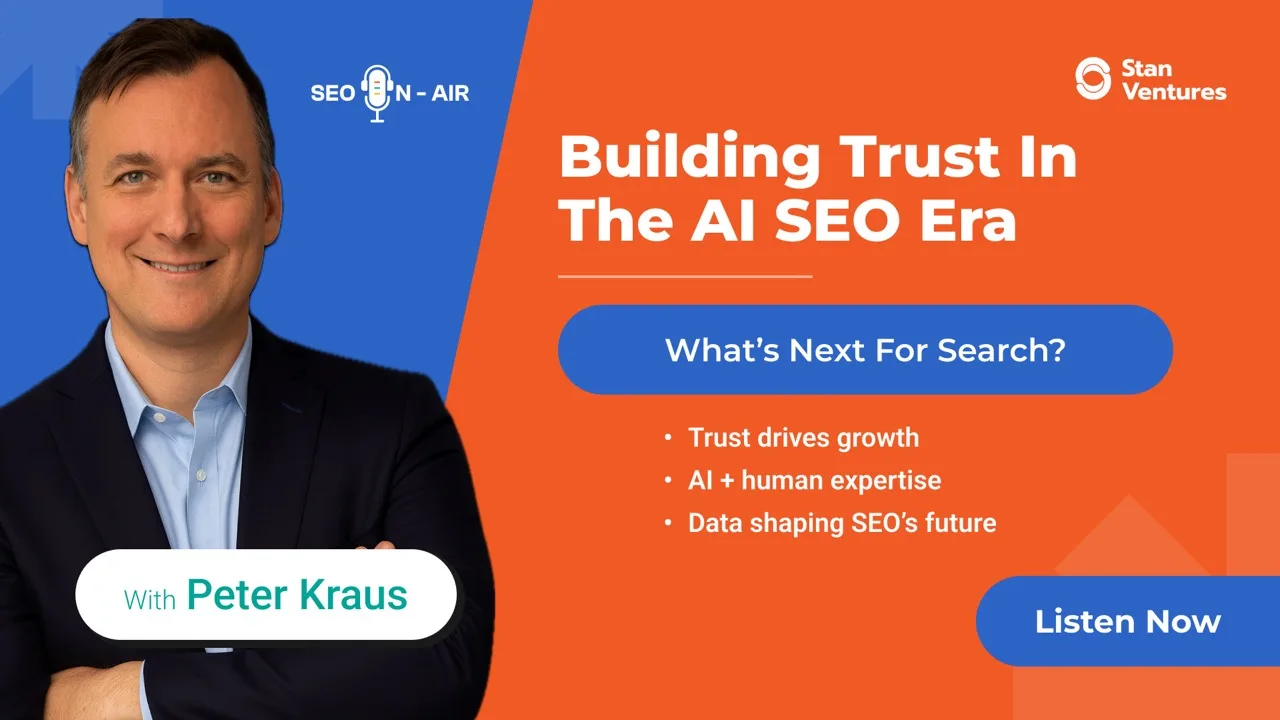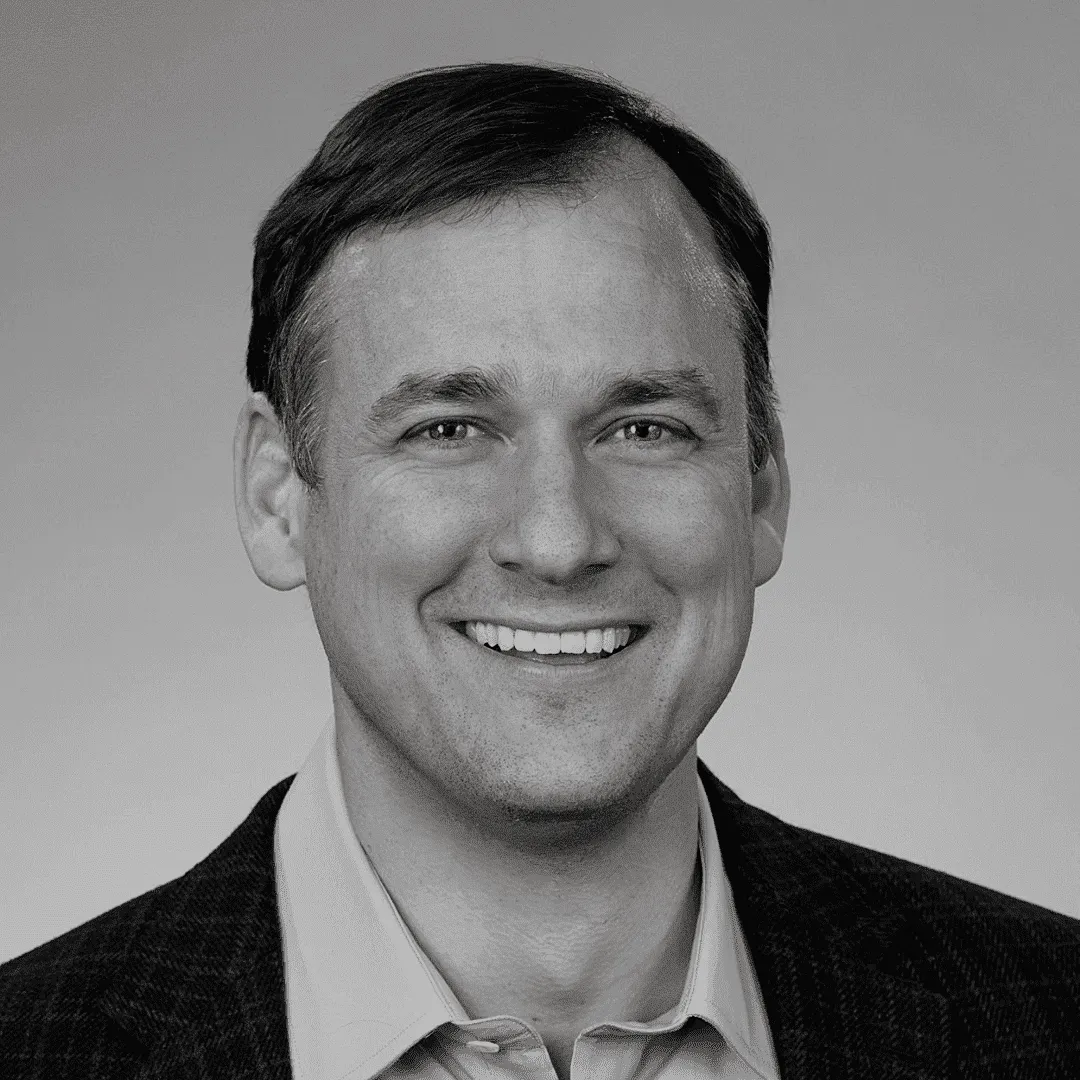
00:00:00:00 – 00:00:20:16
Peter: I’m Peter Kraus, CEO of Rellify, based in Virginia Beach, Virginia, where I’ve lived for about ten years with my wife and our three children. I moved here from Washington, D.C., where I lived for about 14 years. During that time, I worked for Concur out of Seattle, ran a global supply team, and spent a lot of time on the road.
00:00:20:16 – 00:00:35:09
Peter: I’ve been to many countries and have now led 15 software development teams in my career. I love working with innovators, and I’m proud of the Rellify team and what we’ve accomplished.
00:00:35:11 – 00:00:46:18
Aaron: What would you say is the best way to identify opportunities for innovation — in general or specifically with SaaS enterprise platforms? And how can businesses, like those in SEO, do the same?
00:00:46:22 – 00:01:10:12
Peter: Great question. I’ve been in the SaaS space since the early 2000s. Back then, the challenge was convincing companies they could entrust their data to us as a service provider — before the term “cloud” even existed. Throughout that journey, it’s always been about trust.
00:01:10:12 – 00:01:40:18
Peter: Can a customer trust you with their business problems? And how are you delivering on your promise as a service provider? In the last decade, with abundant venture funding, we saw an explosion of SaaS products for every business niche. That was fine when funding supported rapid user acquisition, but in the last 2–3 years, the business model has shifted.
00:01:40:18 – 00:02:12:14
Peter: Now, innovation is heavily tied to AI — but it’s also about deepening customer trust. For SaaS-plus-service businesses, the question is: how do you earn trust and use it to grow? That might mean adding related SaaS offerings, expanding service lines, or integrating AI applications.
00:02:12:14 – 00:02:46:19
Peter: For SEO, it’s similar to the evolution SaaS went through from Web 2.0 to today. We need to be open-minded about what “search” and “search optimization” mean in this new landscape.
00:02:46:19 – 00:02:58:15
Peter: What is search now, really?
00:02:58:17 – 00:03:01:04
Aaron: I’ve actually done another podcast about that.
00:03:01:07 – 00:03:12:12
Peter: Right. It’s a great time to be in this business, but you have to stay focused on your customer’s goals and on earning their trust.
00:03:12:16 – 00:03:28:01
Aaron: When it comes to AI — since it’s been around for a while — I think it’s brought some mistrust, too. People aren’t always sure if content is genuine. How can businesses use AI and still maintain trust with clients or customers?
00:03:33:20 – 00:04:01:18
Peter: Content has always been king. In the age of AI, content is the emperor. Quality matters more than ever. Soon, AI agents will do more on our behalf and will be able to understand your content instantly. That’s why it’s critical to have relevant, authentic, curated content that accurately represents your business.
00:04:01:20 – 00:04:23:14
Peter: Poor or misleading content could confuse AI agents immediately, unlike humans who process information more slowly.
00:04:23:14 – 00:04:35:02
Aaron: I think a lot of people are using AI for the most basic tasks or automation. How do you balance automation with human expertise in technology?
00:04:35:05 – 00:05:02:06
Peter: It’s a balancing act. I think of it as augmented intelligence — workflows where AI supports the decision-making but humans maintain creativity and judgment. Some processes can and should be fully automated, depending on risk tolerance. But again, it comes back to trust.
00:05:02:06 – 00:05:31:05
Peter: You need to ask: which automations improve trust, and which risk undermining it? For example, automation can enhance trust if it personalizes content or speeds up customer support. But quality and trust always have to remain at the forefront.
00:05:35:00 – 00:05:51:08
Aaron: Quick question — when using AI tools, especially in your industry, how important are the inputs you give it?
00:05:51:10 – 00:06:09:11
Peter: At Rellify, inputs are almost everything. Prompt engineering is getting easier, and tools are more powerful, but you still need accurate, audience-relevant inputs to drive results.
00:06:09:11 – 00:06:32:23
Peter: I believe these large models are more about generation than creation. The human spirit still drives true creativity — these models simulate what’s been created before.
00:06:33:01 – 00:06:40:07
Peter: That’s important, but not the same as genuine creation.
00:06:40:07 – 00:06:42:04
Aaron: So, interpretation versus creation.
00:06:42:09 – 00:07:05:00
Peter: Exactly. Our best use of AI is in analytics — surfacing audience interests, informing prompts, and deciding on inputs. The choice of inputs should be a human decision, even if generation is automated.
00:07:11:05 – 00:07:23:13
Aaron: For agencies or SaaS platforms wanting to grow internationally, how do you do that while maintaining strong product-market fit?
00:07:23:17 – 00:07:42:20
Peter: That’s one of the hardest stages in business. At Concur, we sometimes had to relaunch in countries where our first approach didn’t work. “Think global, act local” is key — especially for content and marketing.
00:07:42:20 – 00:08:03:22
Peter: Translation software isn’t enough. You need “transcreation” — adapting content to fit the region. Pricing, business models, and positioning may also need to change. Partnerships with local distributors are a proven way to enter new markets.
00:08:04:02 – 00:08:24:12
Peter: Another option is partnerships with companies that already have distribution in that country, where your product complements theirs.
00:08:40:21 – 00:09:03:19
Aaron: Hypothetically, if I have an SEO agency in India and want to open one in the U.S., what are some initial steps I should take?
00:09:04:23 – 00:09:26:15
Peter: If you serve divisions of global companies, you can often follow them into other regions and start there. That gives you case studies and credibility. Going “brute force” into a new country without existing trust is much harder. Once you have local wins, you can scale with marketing.
00:09:53:20 – 00:10:10:21
Peter: Building initial trust is key before launching large campaigns.
00:10:10:23 – 00:10:21:15
Aaron: And if I wanted a strategic partnership, how do I create a strong value proposition?
00:10:21:16 – 00:10:55:16
Peter: In the early stages, I prefer referral partnerships over reselling. This keeps you close to the customer. If your offering is unique and valuable, channel partners will want it. Expectation-setting is critical, and sometimes white-label arrangements work even better than resell models.
00:11:58:07 – 00:12:24:12
Peter: To choose a partner, look at their distribution reach, culture, and track record. Partnerships require a culture that values collaboration. Done right, they can be one of the fastest ways to grow.
00:13:35:18 – 00:14:01:04
Peter: Three red flags:
-
They only want marketing buzz, not real business results.
-
They obsess over IP ownership instead of co-creating value.
-
They lack commitment of resources or buy-in from leadership.
00:14:26:05 – 00:14:48:19
Peter: A big green flag is when they have a true growth mindset, are willing to commit resources, and are open to testing and iterating together to create something unique.
00:15:35:11 – 00:16:15:22
Peter: For the future of data and marketing, owning unique data will be critical. Incorporating that into custom AI models can set you apart. And despite the “AI is killing SEO” talk, SEO is still essential because AI models train on web content.
00:17:01:19 – 00:17:31:03
Peter: Doubling down on SEO now can give you benefits both in traditional search and in AI-driven platforms.
00:18:19:21 – 00:18:51:16
Peter: Generative Engine Optimization (GEO) is emerging. If your content is high-quality and well-optimized, you’ll perform better in AI search results, just as in traditional search.
00:19:35:06 – 00:20:12:01
Peter: The core advice hasn’t changed since the early days of the web: know your audience, create relevant solutions, and build trust. Learn to work with AI and data models — they’ll be integral to SEO’s future.
00:21:00:23 – 00:22:49:19
Peter: At Rellify, we help companies reimagine content strategy using custom AI models based on their unique data. We make this affordable as “AI as a Service” and offer 30-day pilots to get clients up and running with actionable content plans quickly.
00:22:52:20 – 00:23:04:13
Peter: You can find us at rellaphi.com or on LinkedIn — search “Peter Kraus Rellify.”
00:23:08:14 – 00:23:12:03
Peter: Appreciate your time, Aaron. We’ll be in touch.
00:23:12:07 – 00:23:33:18
Aaron: That’s a wrap for today’s episode. If you found this valuable, subscribe so you never miss an episode. And if you enjoyed it, please leave a five-star rating — it really helps us grow. To take your SEO game to the next level, visit stanventures.com.
Meet the speakers

Aaron
Podcast Host

Peter Kraus
CEO, Rellify
Guest Bio

Peter Kraus
CEO, Rellify
Peter Kraus is a proven innovator who’s led game-changing ventures from telecom real estate to pioneering SaaS at Concur, culminating in its $8.3B acquisition by SAP. With expertise in M&A, global partnerships, and software development, he’s launched industry-first solutions like e-receipts and Concur Pay. Today, he drives Rellify’s global growth with vision and strategic insight.


